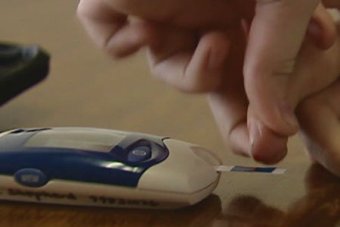The first national survey on the psychological wellbeing of young people with type 1 diabetes has found one in four of them reported moderate to severe anxiety or depression.
Diabetes Australia surveyed 800 teenagers and found about one in three needed mental health support and about half of their parents were “often worried” about their child’s health.
There are more than 10,500 young people aged between 10 and 19 with diabetes in Australia and 93 per cent of them have type 1 diabetes.
Diabetes Australia chief executive Professor Greg Johnson said there was a lot of distress surrounding the “complex condition” which required around-the-clock monitoring.
He said the illness had “a profound impact” a person’s daily life.
It’s bad enough being an adolescent and trying to grow up but when you’ve got type-one diabetes as an overlay, you really can have very serious problems.
Professor Greg Johnson, chief executive, Diabetes Australia
“Children worry they have too much responsibility for their care,” he said.
“Boys are concerned that friends and family don’t understand just how difficult living with diabetes is for them.
“These young people have to monitor their diabetes every day, measure their blood-glucose levels multiple times a day, prick their fingers four or five times a day, inject glucose multiple times a day.”
Professor Johnson said many teenagers and their parents were frequently worried about their blood-sugar levels dropping to dangerously low levels when they were asleep.
One in three of those young people had four or more hypoglycaemia episodes every week.
However most were not serious.
“Occasionally, not often, we hear of these terrible cases of a death in bed that might happen,” he said.
“So there’s a lot of distress, a lot of anxiety about having to cope with type 1 diabetes during this critical period of kids growing from being children to adults.”
Professor Johnson said the starting point was to recognise how many people were affected and to provide psycho-social support for both the patients and their families.
“It’s bad enough being an adolescent and trying to grow up, but when you’ve got type 1 diabetes as an overlay, you really can have very serious problems,” he said.

